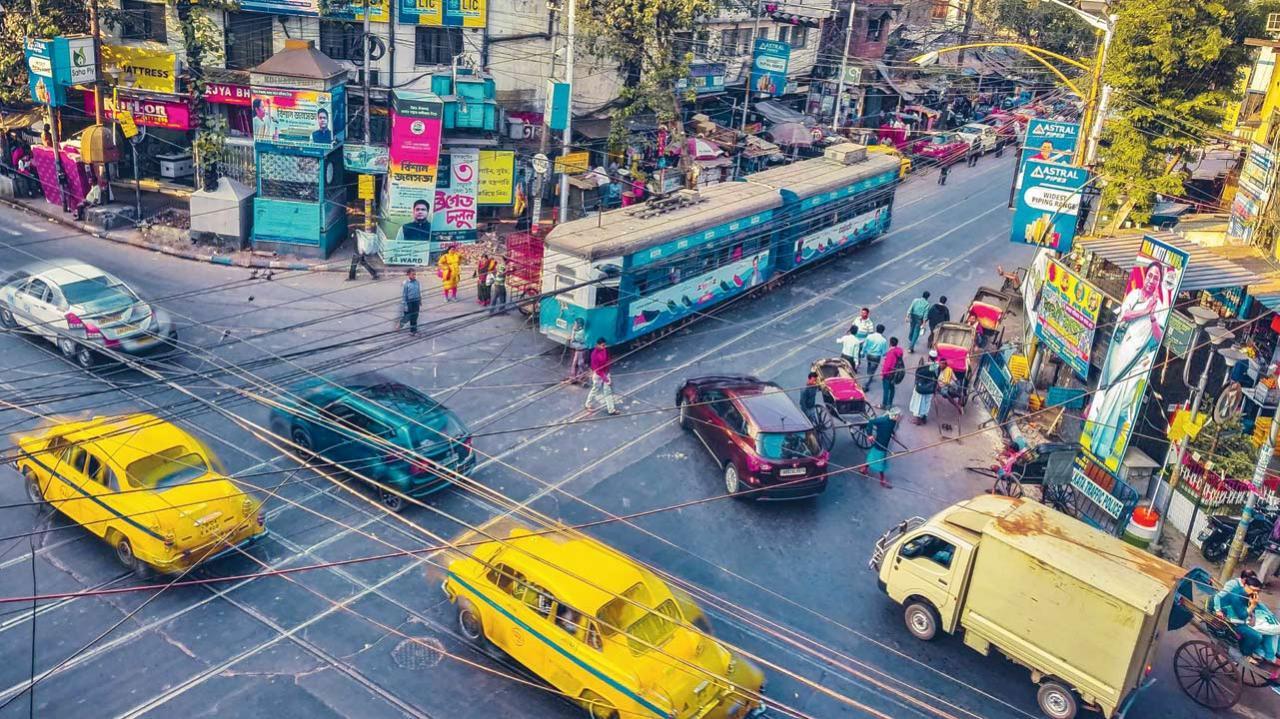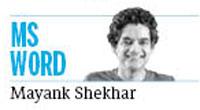Conversational sketch of an adorable city that quite simply never leaps

You see Biharis running the streets still—hardcore hajaams cutting hair, vendors selling jamun, cabbies in sweetly khatara, yellow Ambassadors. Representation pic
What’s it about a city, that no matter who you meet, whatever their age, or whether they live within it anymore, the conversation inevitably centres on what it used to be. That’s been Kolkata for me, including its former name Calcutta (‘Cal’), for what it was.
 Of course it’s the capital of West Bengal, which should only be called Bengal, since East Bengal is merely an old football club that Calcuttans have habitually loved (along with Mohun Bagan, Mohammedan Sporting).
Of course it’s the capital of West Bengal, which should only be called Bengal, since East Bengal is merely an old football club that Calcuttans have habitually loved (along with Mohun Bagan, Mohammedan Sporting).
The East—first split off from its western part by the British in 1905 and reunited in 1911—is now a bustling economy, Bangladesh (formerly East Pakistan), with a much higher per-capita income than India’s. It’s a country looking ahead.
What one doesn’t recognise enough about Cal is that in many ways, it is also the capital/hub of the eastern states (Bihar, Odisha, Jharkhand), even those further north-east (Assam, Manipur, Tripura, etc). You sense it on the streets/airport. Which is also true for the four traditional metropolitan cities—Delhi (North), Madras (South), Bombay (West).
Besides longer histories as cities, are traditional metros hugely different from the rest of India? Let’s just put it this way, as we speak in 2022, all these four metropolises have state governments different from the one in the political Centre; which appears an anomaly/outlier, given a common perception that India is heading towards some sorta one-party (BJP) rule.
Maybe larger populations, hinged on massive cities of their own, prefer local chieftains, with more independent persuasions—Mamata in Cal (post Buddhadeb, and Jyoti Basu for the longest before both), Kejriwal in Delhi (with Sheila Dixit for a decade and half before him), Thackerays in Mumbai (for way longer), Stalin in Chennai (after Karunanidhi/Jayalalitha, currently).
Compared to these metros, how cosmopolitan is Cal? A strong memory of my kindergarten years living in the city is being asked quite often, “Tumi Bangali ki Hindustani?” Which I realise, decades later, didn’t mean whether I’m Indian, or secessionist Bengali. Merely the language that came naturally to me: Bangla, or Hindustani (Hindi-Urdu).
“Aami bhalo kore Bangla bujhi; bolte pari na (I understand Bangla, just can’t speak it well),” I say often in the company of Bongs, which has rarely stopped them from continuing to talk in Bangla still, even if I’m the only non-Bong in the room. Also it’s common among pedestrians in Cal to assume you speak Bangla. They automatically start off. To be fair, it’s the sweetest language I know.
That the past generation, upper-class Bongs spoke fluent English, with a pucca British accent—“Oxford-on-Hooghly”, as Vir Sanghvi derisively described Satyajit Ray’s twang—has much to do with Cal being British India’s capital until 1911.
Whatever else that did, access to quality English education has certainly helped Cal produce some of the finest national/global academic/professional successes, even up till now. All of them emote forever on their love for Cal. Just that they don’t live there anymore. Maybe melancholy remains at the core of the Bengali mind.
Peering at Cal’s future, writer Amitav Ghosh told me in an interview in the early 2000s, that it’s a city with maximum potential to regain its place under the sun, because East Asia had risen. As the crow flies, Cal was closest to the global East to benefit from riches/commerce/trade. But that’s not happened yet.
Why the British moved the Indian capital to a spanking New Delhi in 1911, I’m sure, is a 10-mark question in a modern Indian history paper. My local friend over a long ‘adda’ involving Darjeeling tea descending to whiskey tells me it must’ve had to do with the upsurge of gigantic revolts against the Empire in Bengal, with Cal as its centre. New Delhi would’ve been safer to issue distant diktats from.
It’s the same strong resistance led by the Left around the 1970s/80s that made corporates headquartered in Cal flee to other cities. The advertising industry moved too. Along with them the educated looking for plum jobs.
Around then, my friend tells me, Cal had neighbourhoods dedicated to multiple communities: Punjabis, Gujaratis, ‘Southies’… You barely find them anymore. You see Hindi speaking Biharis running the streets still—hardcore hajaams cutting hair, vendors selling jamun, cabbies in sweetly khatara, yellow Ambassadors. Prices are cheap. Rents are low. Bargains are hard. It feels like the lovely ’70s alright.
Here’s what unites the Calcuttan, regardless of where they’re originally from—their love for popular art, music in particular. Both seem internal to Bengali homes. It’s not a surprise that the best desi cover-band I’ve heard is the one performing in front of me at Someplace Else on Park Street. It’s called Urban Monkz, with the brilliant Bucha on vocals, Tutul Da on drums (love these Bong ‘pet names’).
Speaking of which, over two decades that I’ve been visiting Cal as an adult, places to remake memories together remain the same—Someplace Else, Oly pub, Roxy nightclub, Peter Cat, Kusum’s rolls, Bar-B-Q Chinese…
For once, nostalgia is not an exaggeration. It is live and real. And yet after a night of the best band I’ve witnessed in sometime, I hear patrons complain to the manager at Someplace Else smoking room, “Ki hocche dada. Bollywood cholchhe. This was a ‘rock place’. MLTR (Michael Learns To Rock) sat on this seat in the good old days; no, no, okhane na, right here…” Oho.
Mayank Shekhar attempts to make sense of mass culture. He tweets @mayankw14
Send your feedback to mailbag@mid-day.com
The views expressed in this column are the individual’s and don’t represent those of the paper.
 Subscribe today by clicking the link and stay updated with the latest news!" Click here!
Subscribe today by clicking the link and stay updated with the latest news!" Click here!










